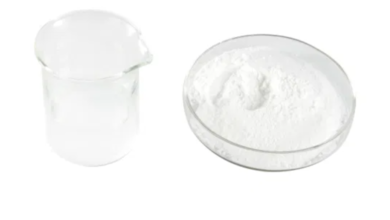Healthy Life Wellhealthorganic: Complete Guide With Tips

A complete and ultimate healthy life wellhealthorganic guide packed with tips and tricks to help you achieve your wellness goals. Whether you’re just starting out or searching for new ways to enhance your already health-conscious lifestyle, this blog post has got you covered. Get ready to discover the secrets of maintaining a balanced diet, incorporating regular exercise, practicing mindfulness, and embracing organic living.
The concept of a healthy life wellhealthorganic and the importance of maintaining overall well-being are topics that have gained increasing attention in recent years. With the rise of chronic diseases and health problems, it has become crucial for individuals to prioritize their physical and mental well-being. In this section, we will explore what a healthy lifestyle entails, its benefits, and how it can positively impact your overall well-being.
What is a Healthy Lifestyle ? By Well Health Organic
A healthy lifestyle encompasses all aspects of an individual’s life – from their daily habits to their environment – that contribute to their physical, mental, and emotional well-being. It involves making conscious choices towards leading a balanced life that promotes good health and prevents disease or illness. This includes maintaining a nutritious diet, engaging in regular physical activity, managing stress levels, getting enough sleep, avoiding harmful substances such as tobacco and excessive alcohol consumption, among others.
The Importance of Maintaining Overall Well-Being
Our overall well-being plays an essential role in our quality of life. When we neglect our physical or mental health, it can lead to various negative consequences such as increased risk of chronic diseases like heart disease or diabetes, reduced productivity at work or school due to fatigue or illness, and strained relationships due to poor mental health.
On the other hand, prioritizing our overall well-being can bring numerous benefits such as improved energy levels, enhanced mood and emotional stability, better cognitive function and memory retention, and decreased risk of developing chronic illnesses.
What is Wellhealthorganic?
Wellhealthorganic is a holistic approach to maintaining a healthy lifestyle. It focuses on promoting overall well-being by incorporating natural and organic products into daily routines. This includes a balanced diet, regular exercise, and mindful living.
Why is it beneficial for a healthy life?
1. Chemical-free Products: One of the main benefits of using Wellhealthorganic products is that they are free from harmful chemicals and toxins found in many conventional health and beauty products. These chemicals can have adverse effects on our health, including hormonal imbalance, skin irritation, and even cancer. By choosing organic products, you eliminate the potential risks associated with chemical exposure.
2. Nutrient-rich Diet: Another integral aspect of Wellhealthorganic is consuming organic foods that are rich in nutrients. Organic farming practices focus on nurturing the soil using natural methods rather than relying on synthetic fertilizers. As a result, organic produce contains more vitamins, minerals, antioxidants, and phytochemicals compared to conventionally grown fruits and vegetables.
3. Environmental Benefits: Choosing Wellhealthorganic not only benefits your personal health but also has positive impacts on the environment. Organic farming practices promote sustainability by reducing pollution levels through avoiding chemical pesticides and fertilizers. Additionally, supporting organic agriculture helps protect biodiversity by preserving soil health and promoting plant diversity.
4. Worldwide Availability: With increasing awareness about the importance of overall well-being, there has been an increase in availability of Wellhealthorganic products worldwide.
Tips for incorporating Wellhealthorganic into your daily routine
Incorporating Wellhealthorganic into your daily routine can be a great way to improve your overall health and wellness. It provides essential nutrients and antioxidants, reduces inflammation, and helps boost immunity. However, we understand that it may seem overwhelming at first to incorporate a new product into your daily routine. That’s why we have put together these helpful tips to make the transition easier.
1. Start slowly: Instead of diving headfirst into incorporating Wellhealthorganic into every meal, start by adding it to one meal a day. This could be breakfast, lunch, or dinner, whichever works best for you. Once you get used to it, you can gradually increase the amount and frequency.
2. Mix it up: Wellhealthorganic comes in various forms such as powder, capsules, and oil. You can choose the form that is most convenient for you or try them all out to find what works best for you. Additionally, try mixing it with different foods and drinks like smoothies, soups, salads, or simply sprinkling it over your meals.
3. Make it a habit: The key to successfully incorporating anything new into your daily routine is consistency. Set reminders on your phone or create a schedule for when you will consume Wellhealthorganic each day. After a few weeks of making this a habit, it will become second nature and you won’t even have to think about it anymore.
Importance of exercise and physical activity in maintaining a healthy lifestyle
Exercise and physical activity are essential components of a healthy lifestyle. They not only help in maintaining physical fitness but also have numerous benefits for mental and emotional well-being. In this section, we will delve into the importance of exercise and physical activity in maintaining a healthy lifestyle.
Promotes weight management:
Regular exercise and physical activity play a crucial role in managing body weight. It helps burn calories, build muscle mass, and strengthen bones, all of which contribute to maintaining a healthy body weight. A sedentary lifestyle can lead to weight gain, obesity, and various health issues such as diabetes, cardiovascular diseases, and joint problems. Therefore, incorporating exercise into your routine is necessary for achieving and maintaining a healthy weight.
Improves overall health:
Physical activity has been linked to improved overall health by reducing the risk of chronic diseases such as heart disease, stroke, certain types of cancer, and osteoporosis. Exercise helps improve blood circulation, strengthens the heart muscles, lowers blood pressure levels, and boosts immune function. Regular physical activity also helps in better digestion and aids in preventing digestive disorders.
Increases energy levels:
Engaging in regular physical activity increases energy levels by stimulating the production of endorphins – natural chemicals that make you feel good and energized throughout the day. Regular exercise can also improve sleep quality; thus providing more restful nights leading to increased productivity during waking hours.
A guide to choosing the right foods for a nutritious diet
Eating a nutritious diet is not just about following the latest fad diets or restricting yourself from certain foods. It is about making conscious choices and finding a balance between different food groups to nourish your body with all the necessary nutrients. However, with so many options available, it can be overwhelming to figure out what exactly constitutes a healthy and nutritious diet. That’s where this guide comes in – to help you choose the right foods for your specific needs and preferences.
Start with Whole Foods
When it comes to choosing nutrient-dense foods, whole foods should be your go-to option. These are unprocessed or minimally processed foods that provide a wide range of essential vitamins, minerals, and other nutrients. Some examples of whole foods include fruits, vegetables, whole grains, lean proteins (such as chicken, fish, legumes), nuts and seeds.
Incorporate a Variety of Fresh Fruits and Vegetables
Fruits and vegetables are an important part of any healthy diet as they are packed with antioxidants, fiber and other vital nutrients that promote good health. Aim for at least 5 servings of colorful fruits and veggies each day to ensure you’re getting a variety of vitamins and minerals.
Choose Lean Protein Sources
Protein plays a crucial role in building muscle mass and repairing tissues in our bodies. However, not all protein sources are created equal- some may come with unhealthy saturated fats or added sugars which can negate their nutritional value.
Nutrient-rich superfoods
Nutrient-rich superfoods have gained immense popularity in recent years due to their numerous health benefits and ability to aid in maintaining a balanced, healthy lifestyle. These foods are packed with essential vitamins, minerals, antioxidants, and other nutrients that are vital for optimal functioning of the body.
Including nutrient-rich superfoods in your daily diet can greatly improve your overall health and wellbeing. Not only do they provide an abundance of nutrients, but they also help in preventing chronic diseases and promote good gut health. Here are some top superfoods that you should add to your diet:
1. Berries – Rich in antioxidants like anthocyanins, berries such as blueberries, strawberries, raspberries, and blackberries have anti-inflammatory properties and protect against heart disease.
2. Leafy Greens – Kale, spinach, collard greens are all excellent sources of vitamins A, C, K1 as well as minerals like iron and calcium. They also contain powerful antioxidants that can reduce the risk of chronic diseases.
3. Avocado – Often known as a “superfruit”, avocados are rich in monounsaturated fatty acids which help lower bad cholesterol levels while increasing good cholesterol levels. They also contain fiber and various vitamins like folate, Vitamin E and B6.
4. Salmon – This fatty fish is a great source of omega-3 fatty acids which play a crucial role in brain function and reducing inflammation.
Organic vs. non-organic food options
Organic food has become increasingly popular in recent years, with many people opting for organic options over conventional, non-organic ones. But what exactly does “organic” mean and is it really better for your health? In this section, we will delve into the differences between organic and non-organic food options to help you make informed decisions about your food choices.
What is Organic Food?
Organic food refers to produce that has been grown without the use of synthetic fertilizers, pesticides, genetically modified organisms (GMOs), or irradiation. This means that organic farmers rely on natural methods to maintain soil fertility and control pests.
On the other hand, non-organic or conventional foods are produced using chemical fertilizers and pesticides to increase yield and protect crops from insects. These foods may also be genetically modified for different reasons such as resistance to certain pests or longer shelf life.
Nutritional Benefits of Organic Food
One of the main reasons people choose organic food is because they believe it is more nutritious than conventionally-grown foods. Several studies have shown that organic fruits and vegetables contain a higher level of antioxidants, vitamins, minerals, and beneficial phytochemicals compared to their non-organic counterparts.
This can be attributed to the fact that organic farming practices focus on building healthy soils through crop rotation and composting. These practices increase the nutrient content of the soil which in turn leads to more nutrient-dense plants.
Meal planning and meal prep tips
Meal planning and meal prep are important aspects of living a healthy lifestyle. Not only do they save time and money, but they also ensure that you have nutritious meals throughout the week. Here are some helpful tips for meal planning and preparation to help you stay on track with your healthy eating goals:
1. Start by setting aside some time each week for meal planning. This can be as little as 30 minutes or up to an hour, depending on how detailed you want your plan to be.
2. Take inventory of your pantry, fridge, and freezer before making your grocery list. This will help you avoid buying unnecessary items and utilize ingredients that may already be on hand.
3. When planning your meals, aim for a balance of protein, complex carbs, healthy fats, and plenty of fruits and vegetables. You can also incorporate different cuisines or flavors to add variety to your meals.
4. Consider batch cooking certain components like grains, proteins or vegetables at the beginning of the week. This will make it easier to throw together quick and nutritious meals throughout the week.
5. Don’t be afraid to recycle meals throughout the week by using leftovers in creative ways – for example, leftover grilled chicken can become chicken salad for lunch the next day.
6. Experiment with different cooking methods such as grilling, roasting or steaming which require less oil compared to frying.




